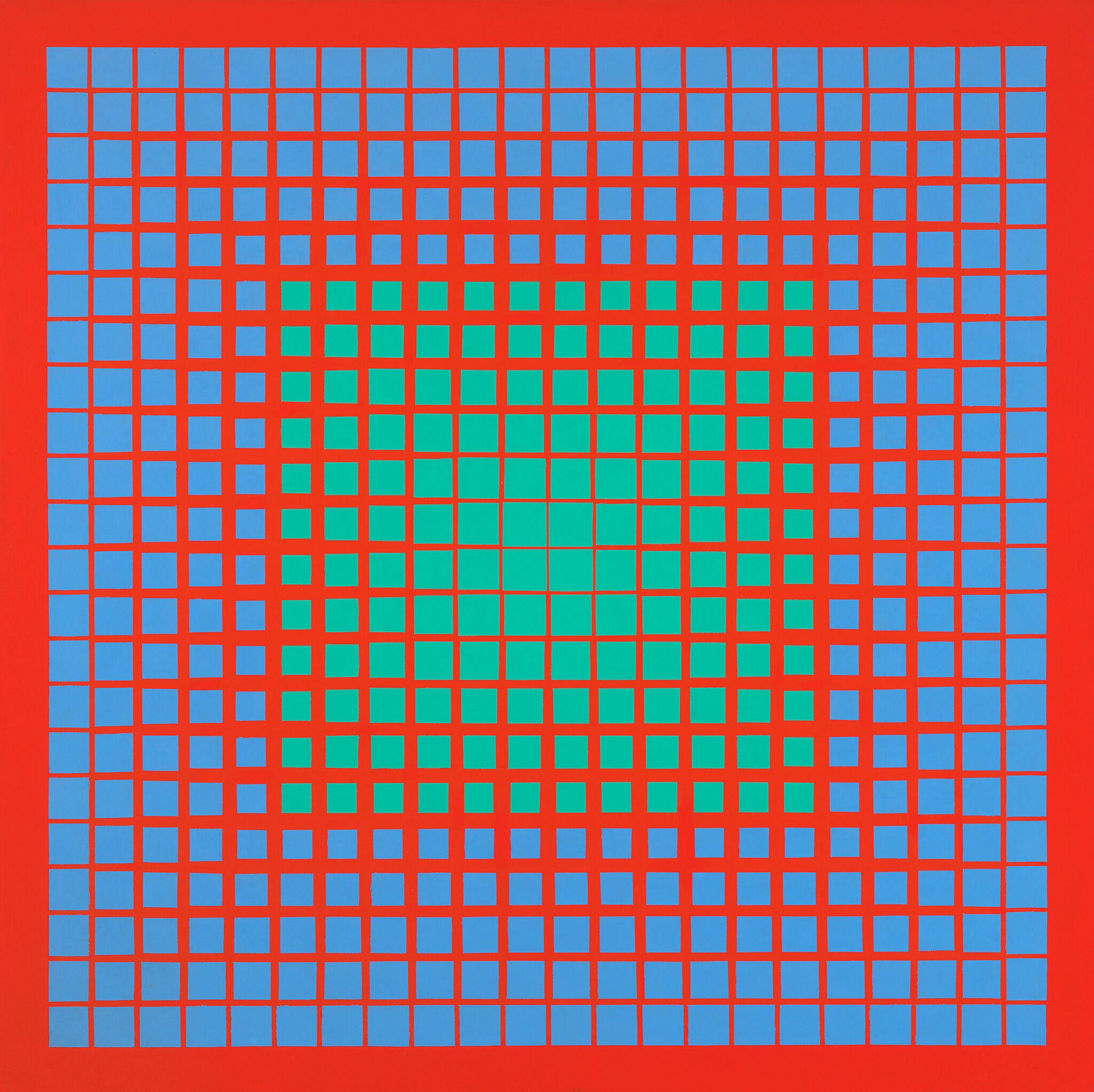Spilling Over: Painting Color in the 1960s | Art & Artists
Mar 29–Aug 18, 2019
Spilling Over: Painting Color in the 1960s | Art & Artists
Richard Anuszkiewicz
3
Richard Anuszkiewicz, who studied with Josef Albers at Yale University from 1953 to 1955, composed this painting with only three colors. But the visual impact—as the title implies—opens beyond that simple arithmetic. Although working with relatively straightforward combinations of line and color, he created complex visual effects, including optical illusions, movement, and the impression of colors mixing. Here, a simple shift in a line’s width impacts the intensity of color and how depth and surface are read. Marcia Tucker, a curator who included Anuszkiewicz in her exhibition The Structure of Color at the Whitney in 1971, pointed out in the catalogue that the artist had once “remarked that one ‘test’ of a color painting might be whether or not the structure of the work is lost entirely in black and white.”

